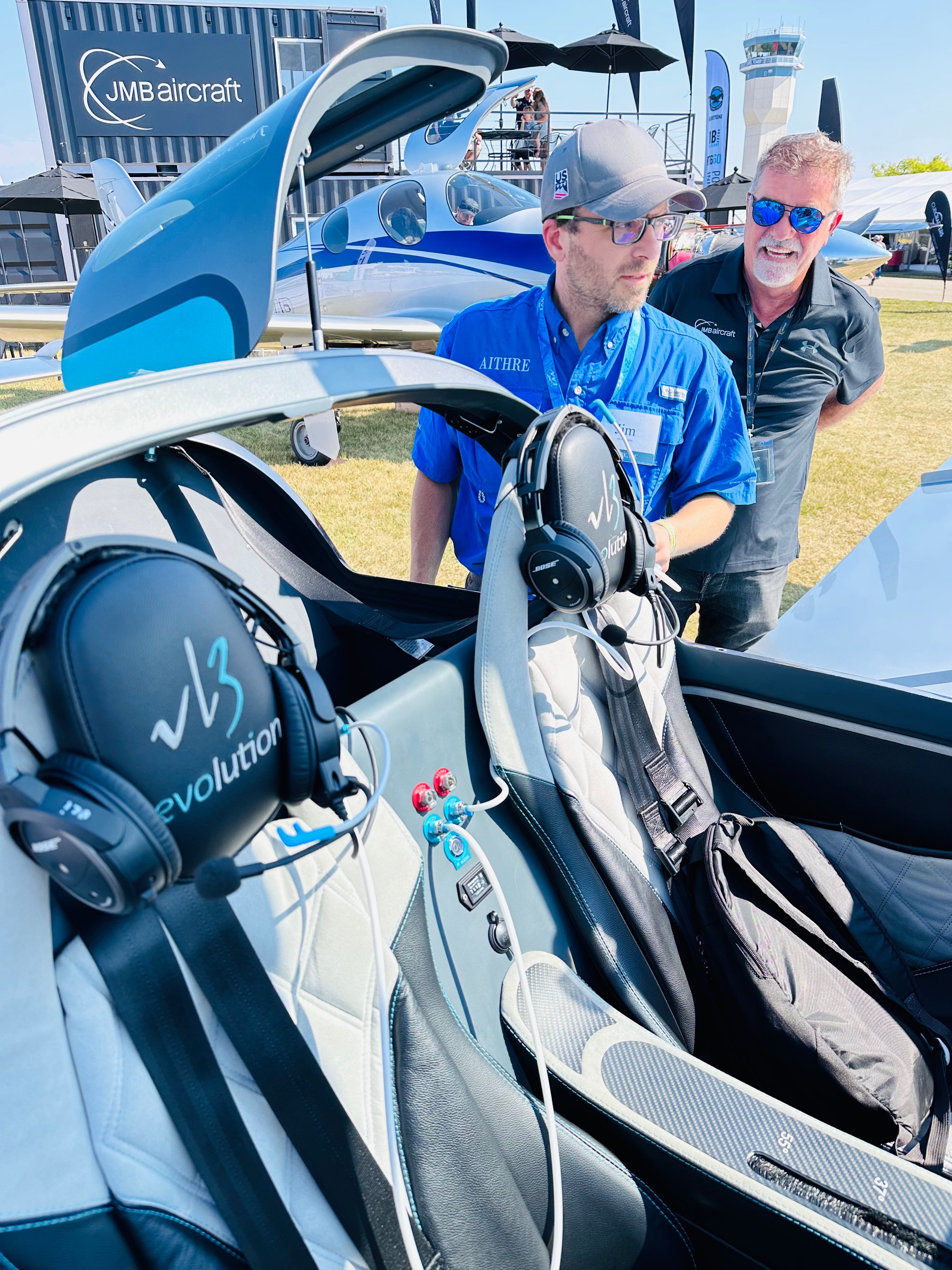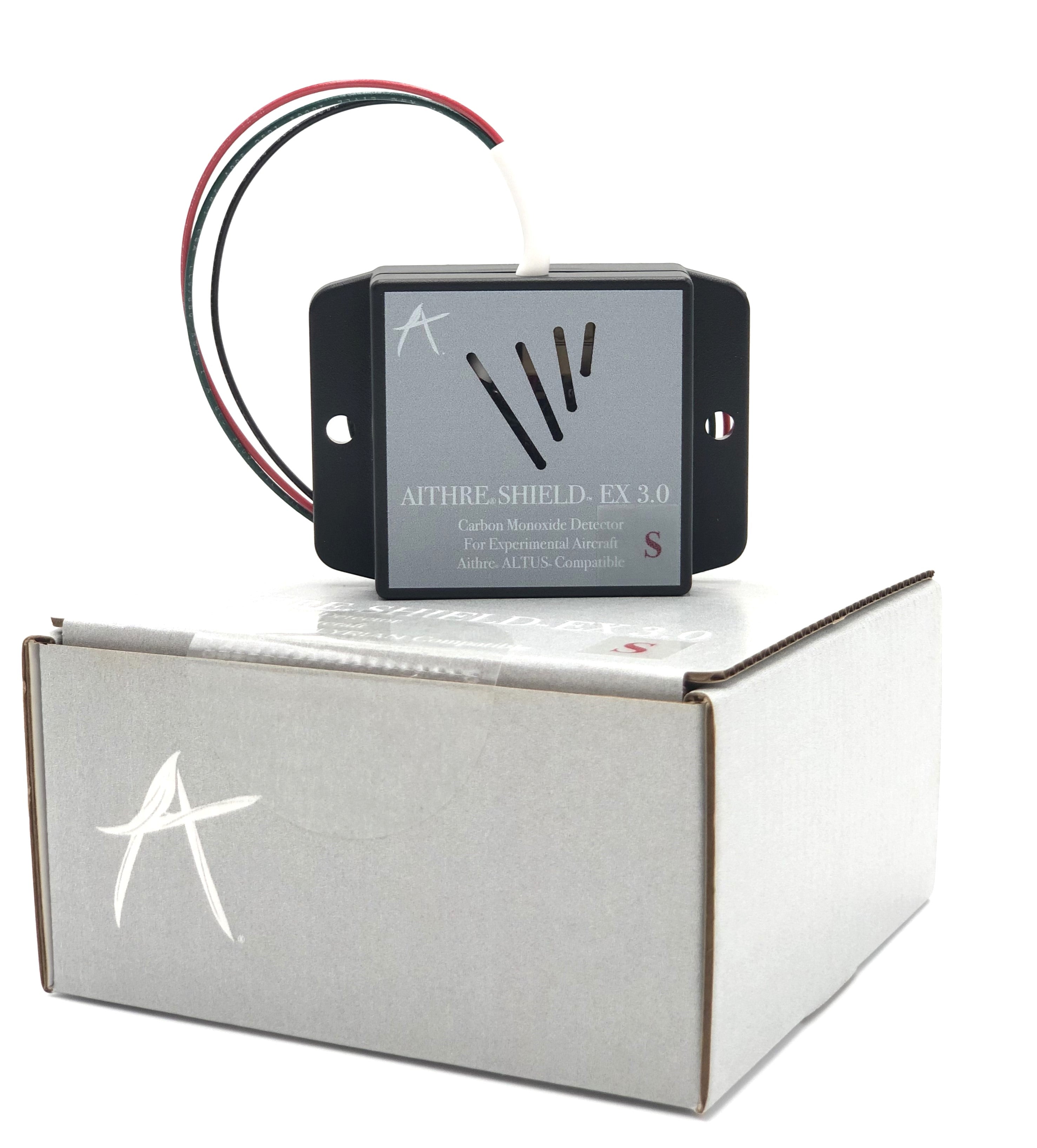
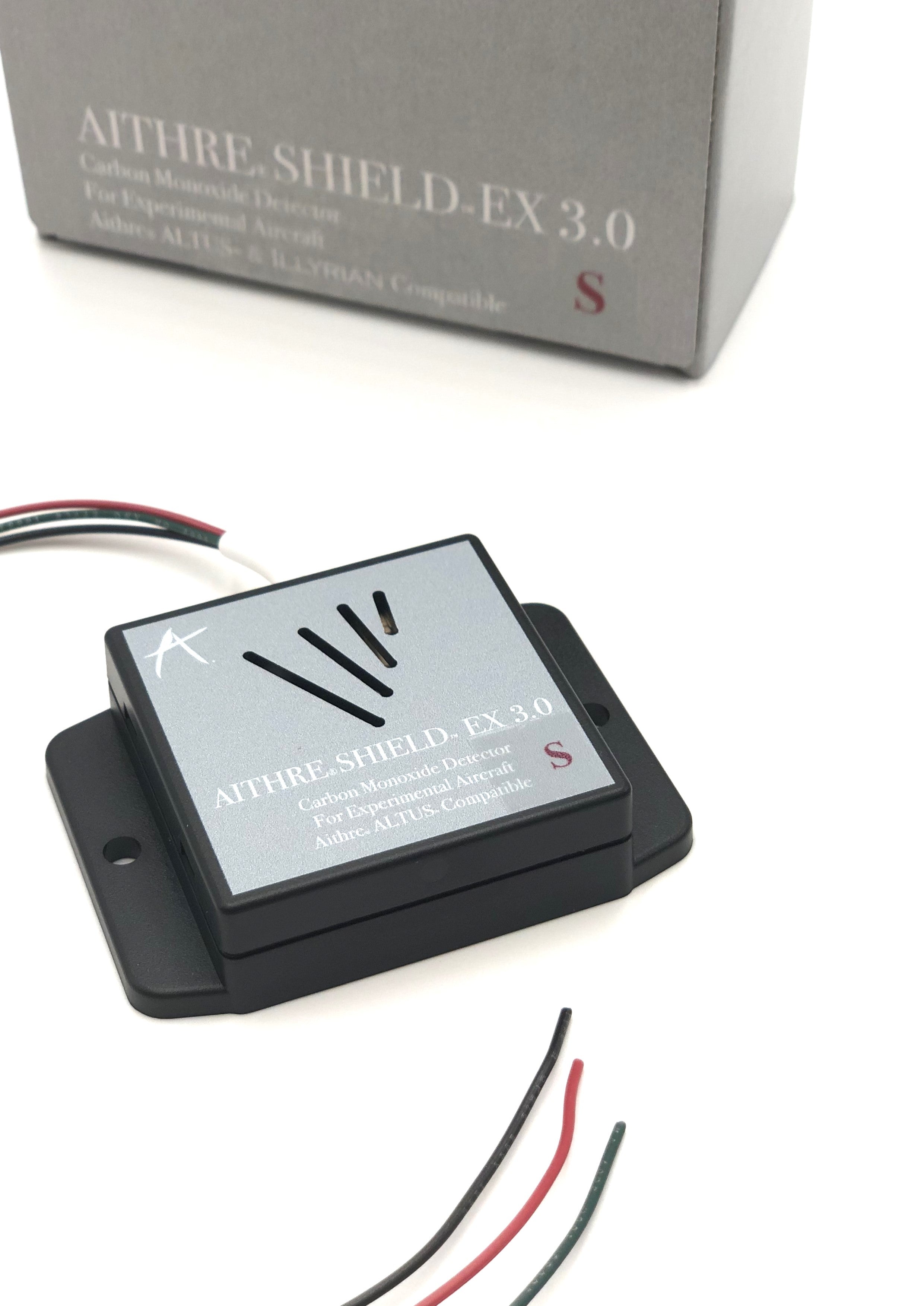
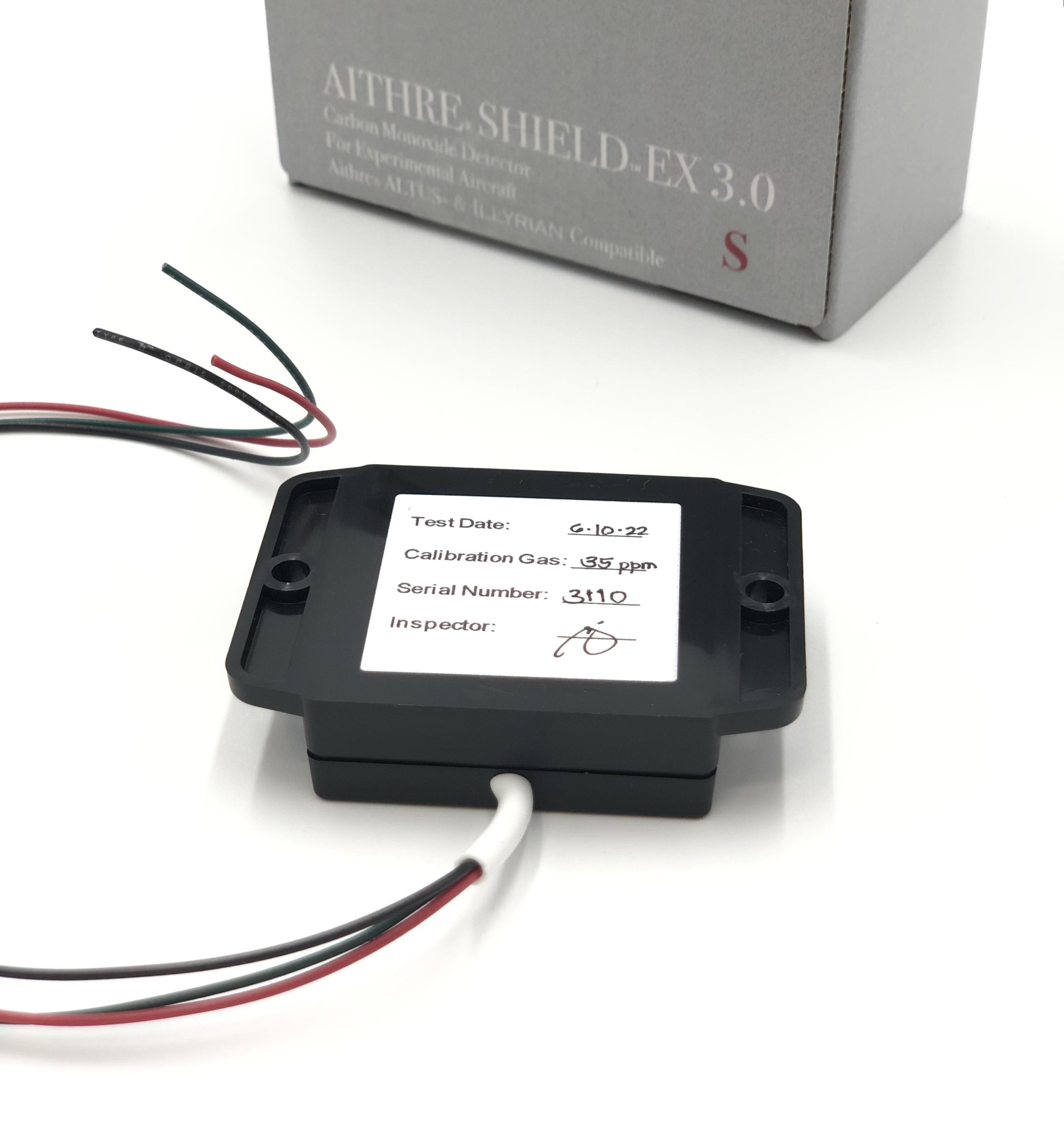

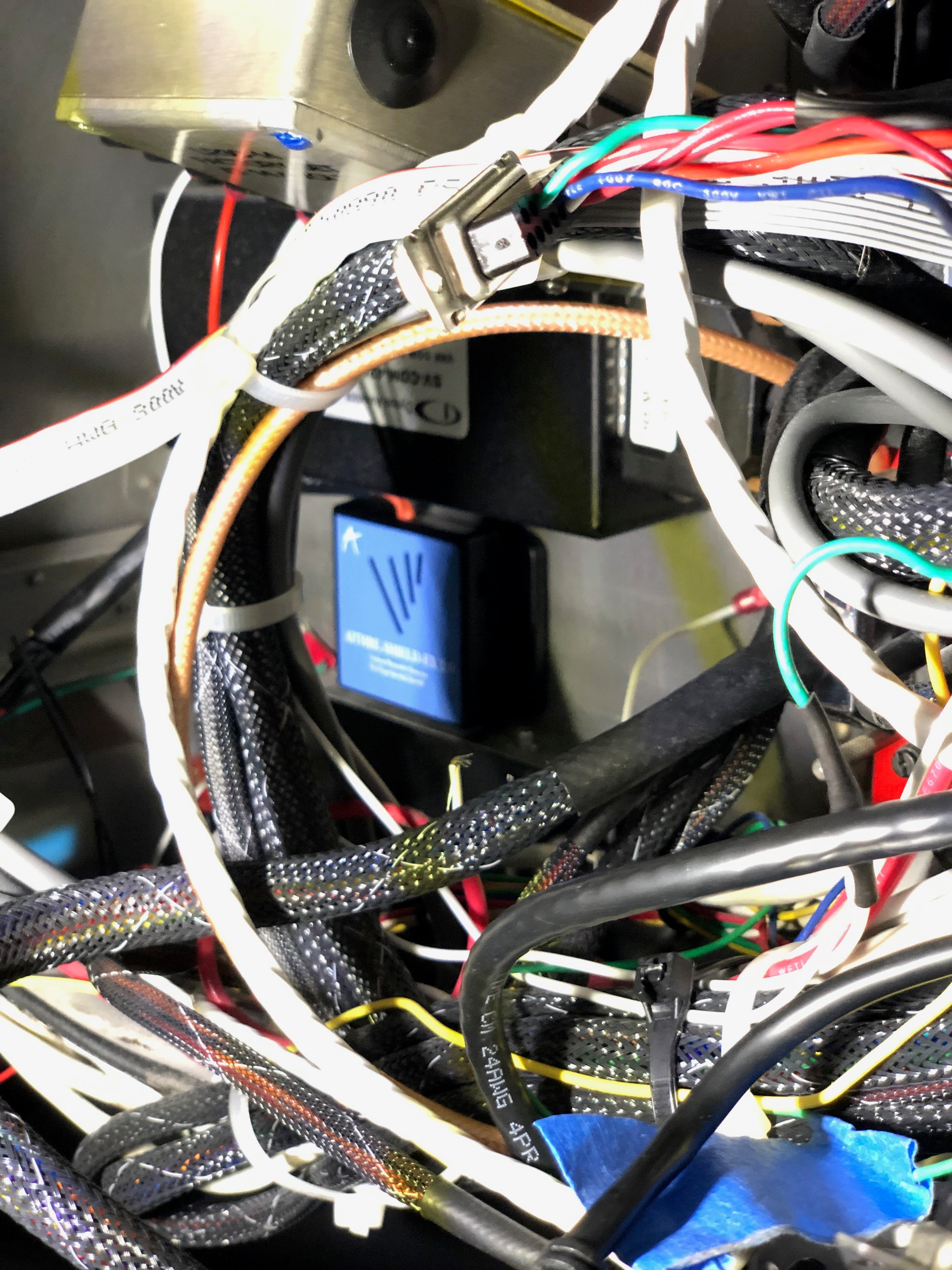
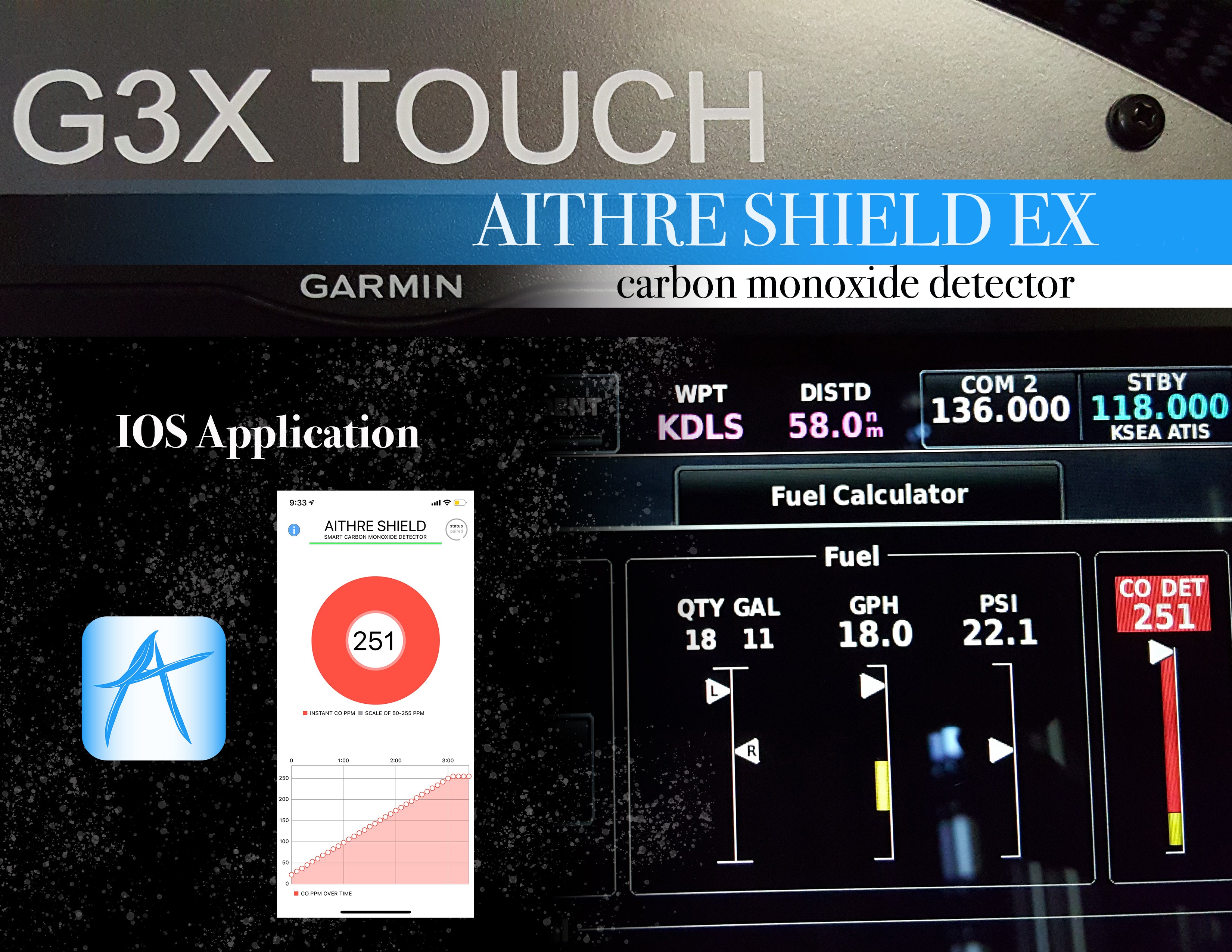
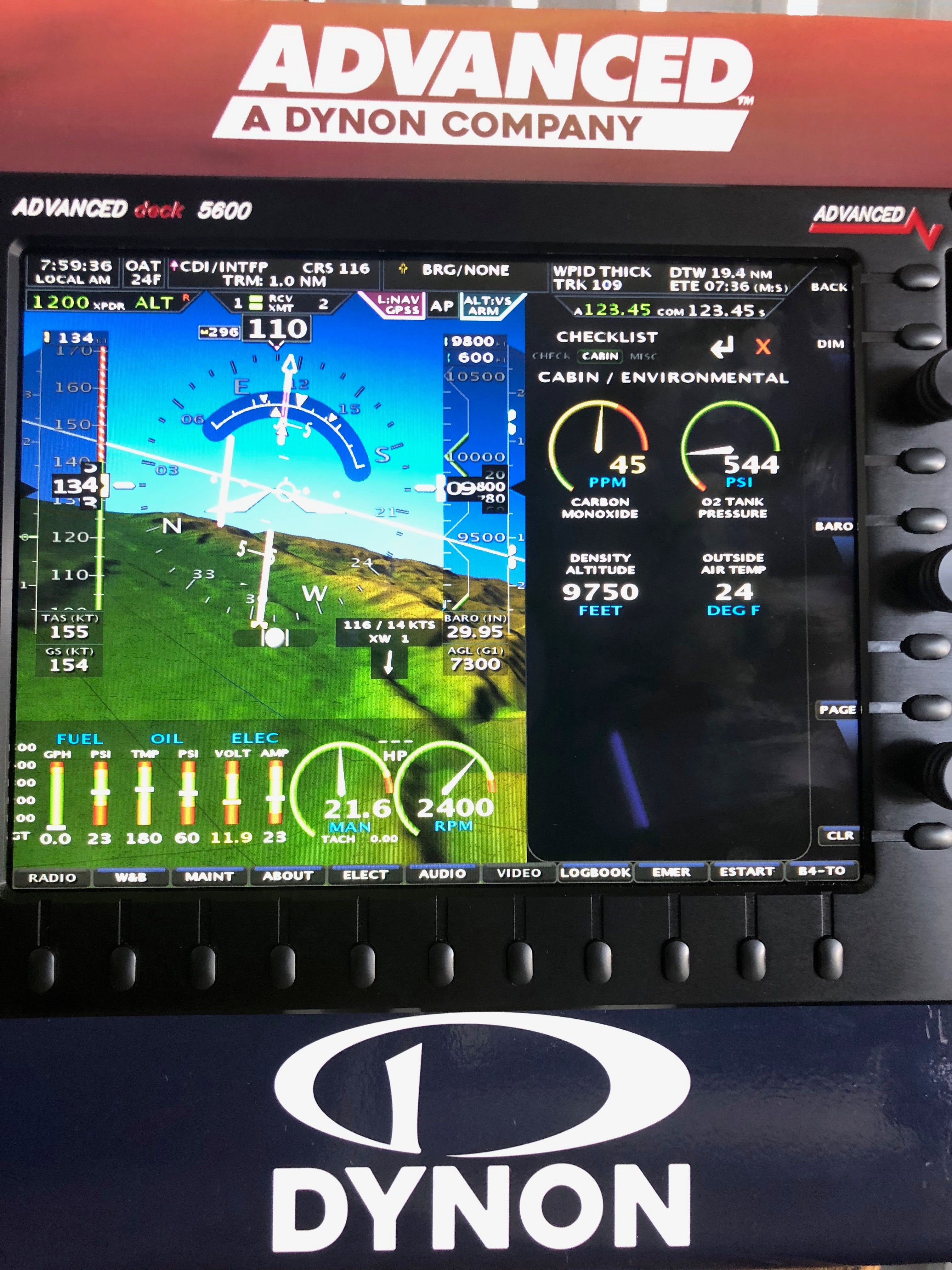
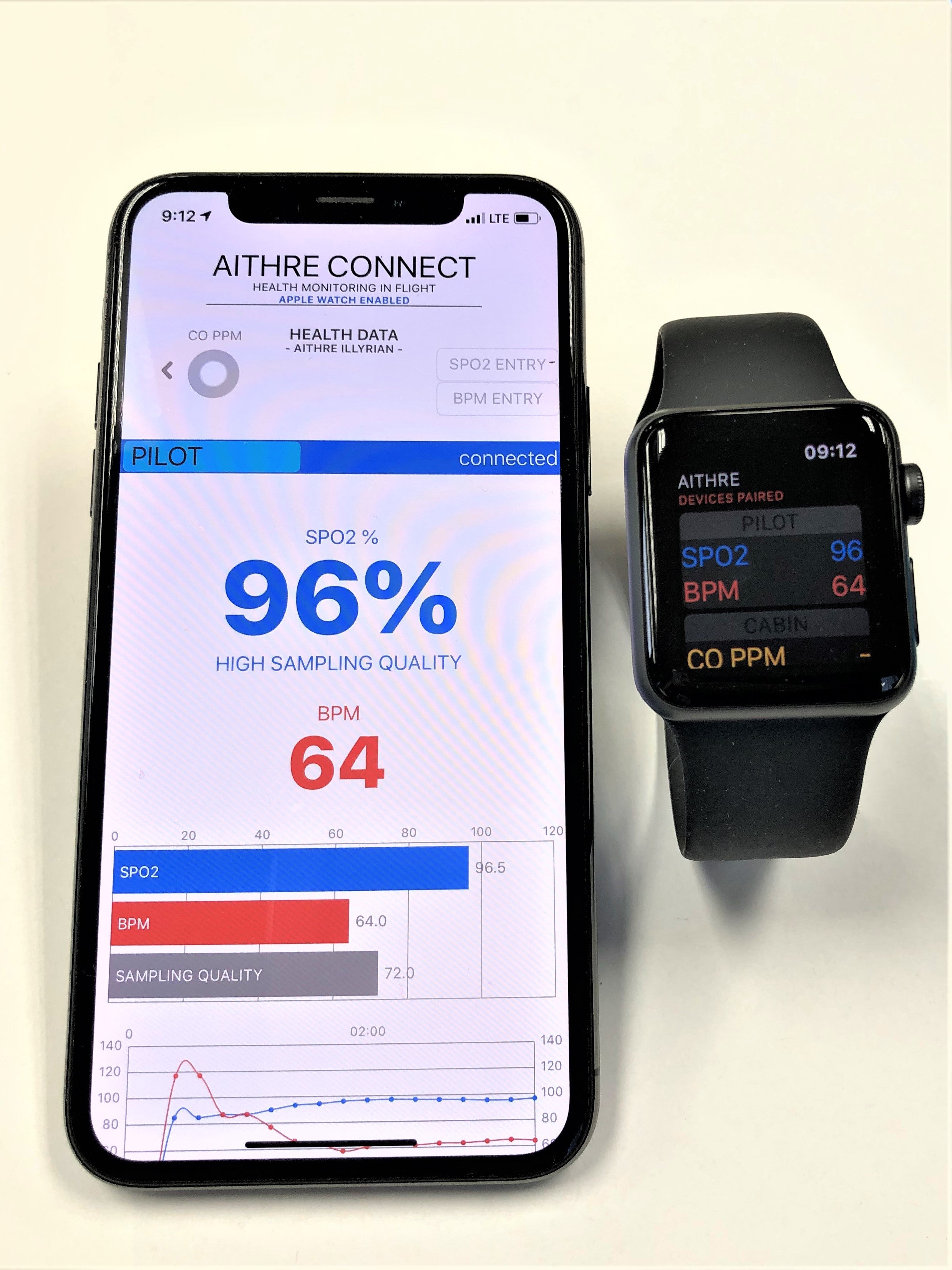
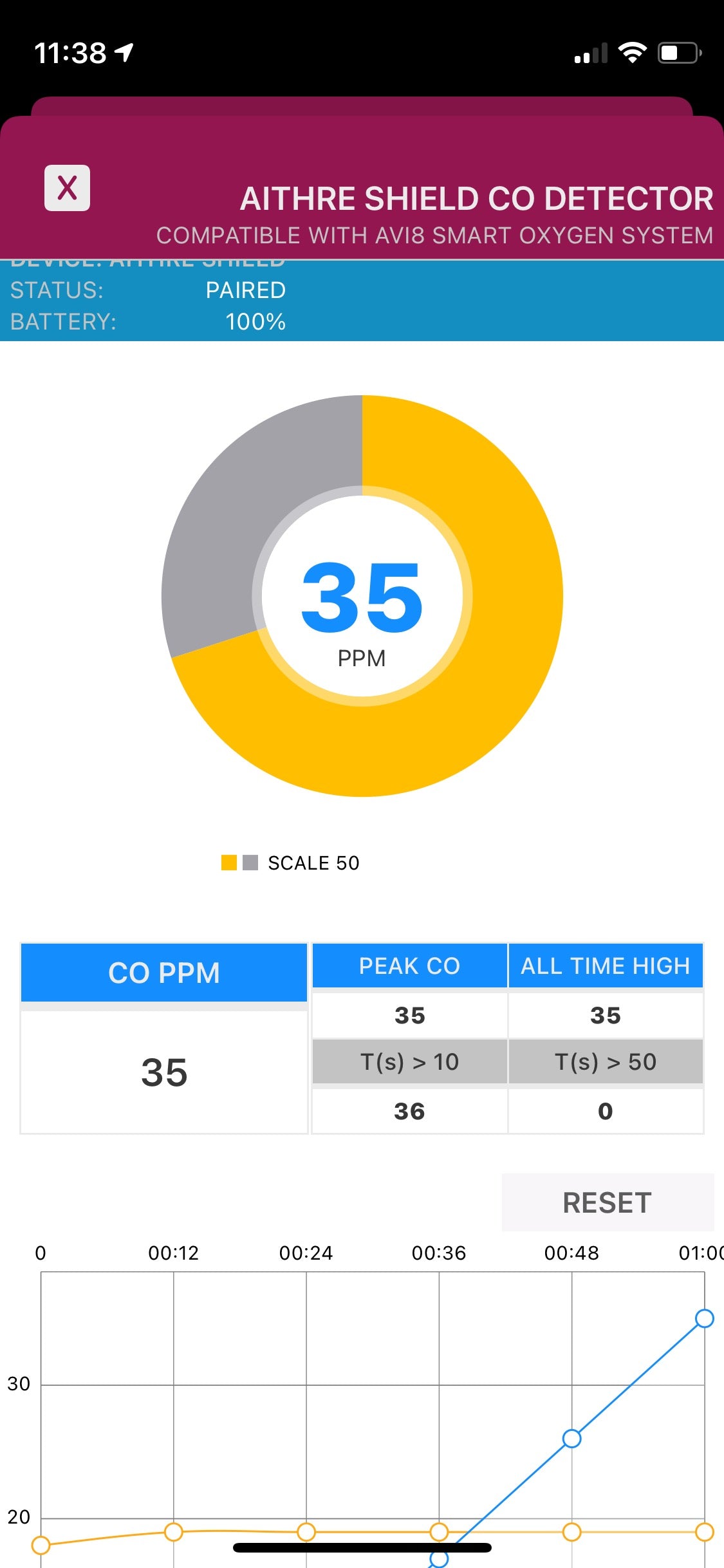
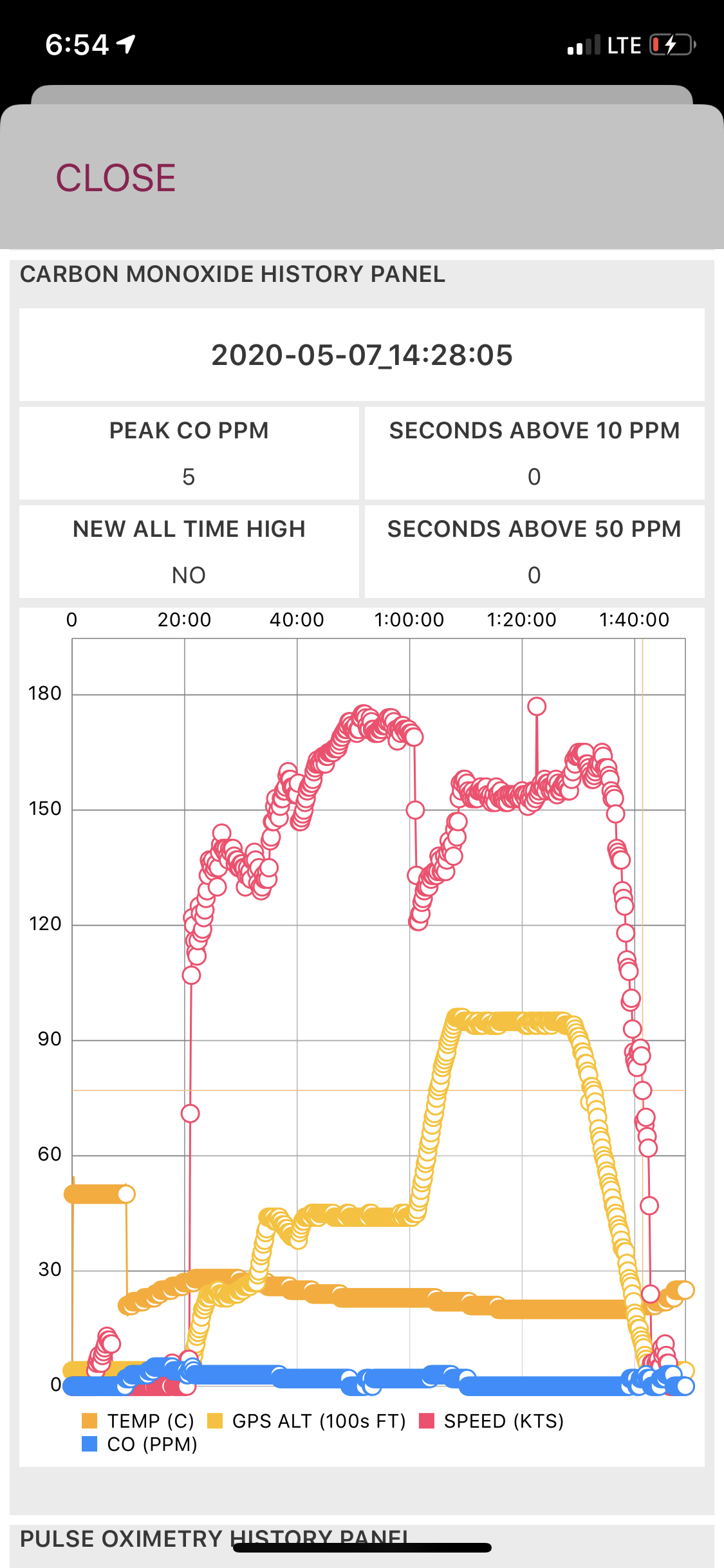
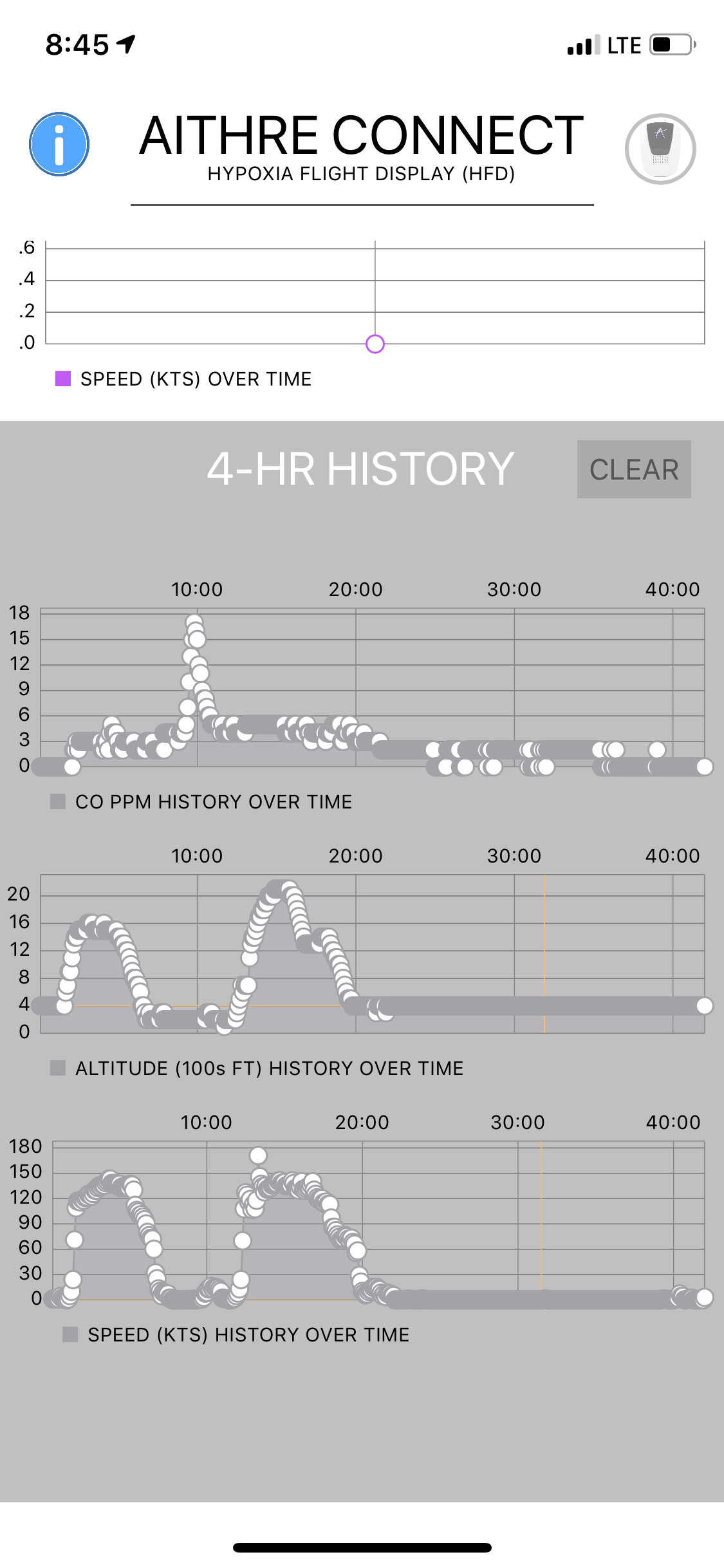
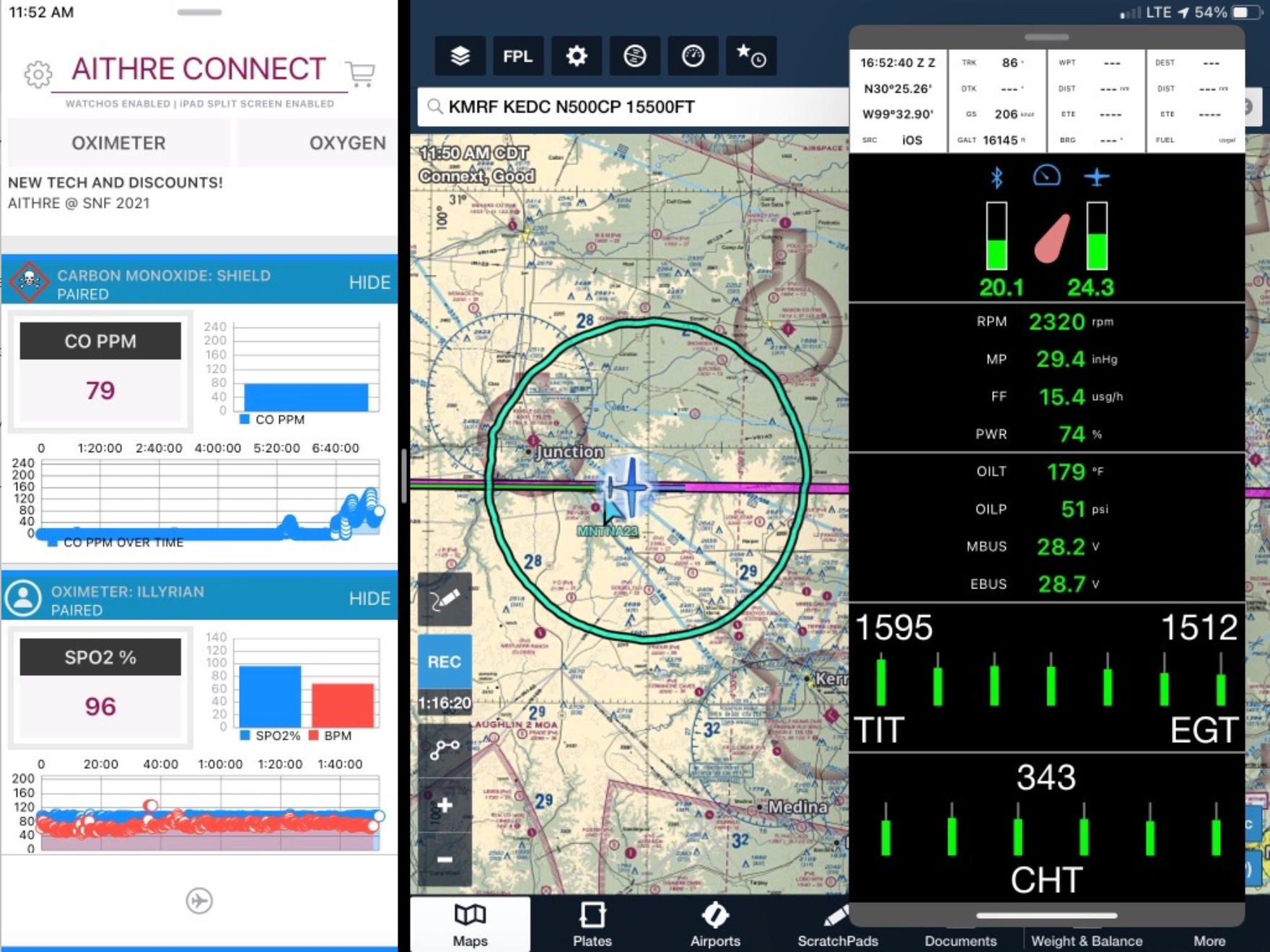

Aithre Inc
Shield EX 3.0-S Behind-the-Panel CO Detector - Altus/Illyrian Compatible - w/ iOS App w/Serial Output
Experimental Aircraft Only: The Aithre Shield EX 3.0-S is the first behind-the-panel device that puts carbon monoxide readings, pilot SPO2 from your Aithre Illyrian, and portable oxygen bottle PSI from your Aithre Altus Meso directly on EFIS using RS-232 output, as opposed to the voltage outputs of the sibling Shield EX 3.0.
The EX 3.0-S works out-of-the-box with the current version of Advanced Flight Systems Avionics firmware. Check with your avionics manufacturer to verify support of the Aithre RS-232 protocol, which is published on our website on the Instructions & Resources page. Otherwise, see the sibling Shield EX 3.0 with its standard voltage outputs that are compatible with Garmin, Dynon, and other avionics manufacturers.
Features simple wiring installation, a small lightweight footprint, iOS integration, and 10 years without recalibration for the CO ppm.
- ALTUS MESO COMPATIBLE: Wirelessly retrieves oxygen bottle PSI data from the Aithre Altus Meso to allow portable oxygen pressure to be provided to your avionics along with carbon monoxide data.
- ILLYRIAN COMPATIBLE: Wirelessly retrieves pilot blood oxygen levels from the Aithre Illyrian to allow for SPO2 blood oxygen levels to be provided to your avionics along with carbon monoxide data.
- OUTPUT TO AVIONICS: Simple installation using just one wire carrying the Aithre RS-232 data protocol.
- iOS: Integrated with the Aithre Connect iOS app to provide discrete and trend CO levels, plus Siri voice notifications to your paired headset (when paired to your iOS device), including 2 ppm, 10 ppm, 50 ppm, and a custom level.
- CSV FILES: CO trip history plotted against speed, altitude, and temperature is provided for your last three trips in the app and automatically saved after each trip as a CSV file to the iOS FILES app.
- SENSITIVE AND PRECISION CALIBRATED: Under 30 second CO sensor response between 0 - 255 ppm with 1 ppm resolution.
- COMPACT: Measures just 1.97” x 1.97” x 0.67” tall and weighs 1.1 ounces (mounting flange adds 0.75" to base width).
- TEMPERATURE INDEPENDENT: Internal temperature adjustment circuit that compensates for temperature induced CO reading errors in the CO sensor between -10°C to +50°C.
- NO RECALIBRATION: State-of-the-art CO sensor requires no recalibration for 10 years under normal operating conditions.
- PRESSURE & ALTITUDE INDEPENDENT: The CO detector is not affected by pressure and altitude changes.
- HAND-CALIBRATED: Every Aithre CO detector is individually calibrated using high precision calibration CO gas and comes with a signed certificate of calibration.



